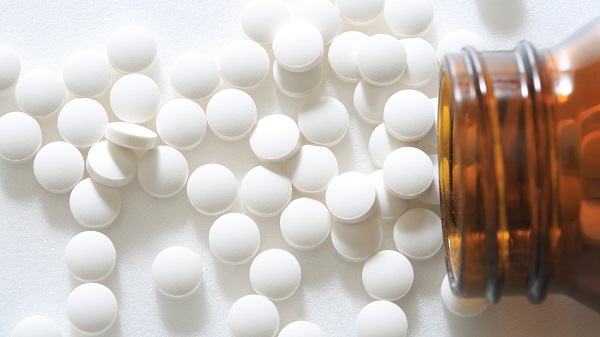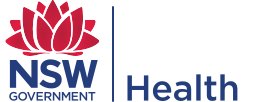Professor Nicholas Lintzeris, addiction medicine specialist and Director of Drug and Alcohol Services at South Eastern Sydney Local Health District, has been watching this crisis unfold over many years.
“This is a slow train wreck, what’s happening in Australia with overdoses,” he says.
“We’ve been saying that now for ten years. Opioid overdoses are increasing. Opiate prescribing is increasing. The use of opioids in our society is going up. We’re not as bad as America but we are on the same trajectory.”
In response to these alarming trends, Professor Lintzeris has led a program to reverse that trajectory by reversing overdoses, one at a time.

The drug that reverses an opioid overdose
If you’ve ever watched a TV hospital drama, you’ve probably seen a character who has overdosed on heroin get brought back to consciousness with a jolt, after a doctor injects them with a drug called naloxone.
Highly effective in reversing the effects of an opioid overdose, naloxone has been used in emergency departments for decades. ‘Take-home naloxone’ programs are aimed at extending the drug’s lifesaving benefits to those who may not make it to hospital in time.
Professor Lintzeris and colleague Dr Ingrid van Beek launched a pilot study of a take-home naloxone program in 2014 at The Langton Centre (an alcohol and drug treatment service) in Sydney’s Surry Hills, and at the Kirketon Road Centre in King’s Cross.
Clients were provided with education on how to prevent and/or manage an overdose, as well as supplies of naloxone to have at home to use in the event of an overdose – the first ‘take-home naloxone’ programs in NSW.
Professor Lintzeris and his team knew they were onto a winner, but convincing other services to adopt the program was challenging. Funding from NSW Health’s Translational Research Grants Scheme in 2016 for the ORTHN Project (Overdose Response with Take Home Naloxone) gave them a chance to take stock and try again.
The ‘one-stop’ model
The take-home kits may have made naloxone available beyond the emergency room, but the drug still had to be prescribed by a doctor and dispensed by a pharmacist for each client. Although this was feasible for people accessing some services, it excluded others. In particular, needle syringe programs (NSP) were identified as a potential point of distribution for opioid users who may not be engaged in treatment, but there was no one to prescribe or dispense medication on site.
Working with NSW Health (including the Chief Health Officer and Chief Pharmacist), peer-based organisation NUAA, and the recently formed NSW Drug and Alcohol Clinical Research and Improvement Network (DACRIN), the ORTHN team designed a specific protocol based on provisions in the legislation regulating how medicines are supplied. This protocol allows for health workers (such as nurses, counsellors and NSP workers) to supply naloxone directly to clients without the need for doctors or pharmacists to be involved.
Subsequently, more than 200 NSP staff and drug treatment workers at more than 20 sites across five NSW Health districts received training in providing take-home naloxone to clients. They distributed more than 600 naloxone kits over six months.
Follow-up with recipients of the kits revealed that approximately 10 per cent of the naloxone had been used within three months.
“Our preference would be none of it ever got used because no one ever overdosed, but the reality is you give it out in case someone overdoses. Our clients were using it,” says Professor Lintzeris.
An evaluation of the cost of providing the training and the medication against the outcomes found that the program is “remarkably efficient”, he adds.
Taking the ‘take-home’ model to more Australians
NSW Health has responded to the positive findings of the translational research project and is rolling out the ORTHN model across Drug and Alcohol and NSP services across NSW from mid-2019.
“This program will save lives, and we urge all drug treatment and NSP services to engage in this program”, says Professor Lintzeris. Clients (and family members and/or friends) will have the choice of take-home naloxone in either a prefilled syringe or a nasal spray, which has only recently become available in Australia.
“But there’s no time to rest on laurels here [just] because we’ve identified a way of reaching one particular population: people who inject drugs and people who attend drug and alcohol services. That’s probably only about half of the [opioid] overdoses that happen in our community,” says Professor Lintzeris.
Professor Lintzeris has been leading a team of clinicians and researchers looking at establishing take-home naloxone programs in five hospital emergency departments in Sydney, Newcastle and Melbourne. People who present to hospital with a suspected opioid overdose will be treated as usual, but then provided with the take-home naloxone before they’re discharged. Both the patient and family members will receive the education component of the program.
In February this year, the federal government committed $7.2 million to fund an expansion of the take-home naxolone program to a range of additional settings frequently accessed by at-risk groups, leading to a national roll-out.
This new funding initiative will provide the impetus to set up take-home naloxone programs that reach the growing number of people who use opioids who don’t fit the inner-city injecting drug user stereotype.
“The average person who overdoses in Australia is a 50-year-old man with chronic pain who overdoses on opioid painkillers (such as oxycodone) in combination with sleeping pills and/or alcohol,” says Professor Lintzeris.
“They live in suburban Australia and they do not access drug treatment or needle syringe programs. We need to work with consumer groups, general practitioners, pharmacists and pain clinics to raise awareness of the risks of overdose and the role of take-home naloxone programs in saving lives.”
By Kate Arneman
Updated 5 years ago
